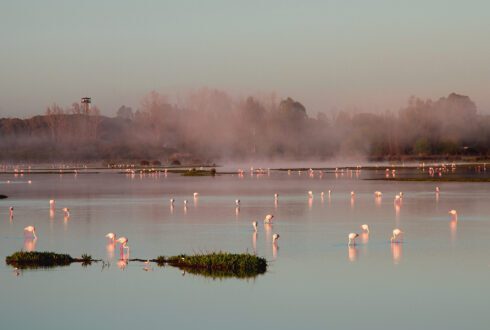AQUATIC birds were at an all time low in Doñana National Park in January 2024, a new report has revealed.
The Doñana Biodiversity Report showed the first month of 2024 registered the lowest number of birds since records began in 1973.
In the first month 2024, only 43,989 birds visited the park due to high temperatures and low rainfall.
The park is usually busiest in January, but it was at a record low last year.

Photo: Doñana National Park/Facebook
Despite this, experts are hopeful things will get better thanks to an agreement between the Junta and the central government to maintain Doñana.
“I am optimistic in comparison to three years ago. Elroy Revilla, report director, said: “Aquatic systems are resilient. Things will improve if forest planning is modified and underground water usage is increased.”
Just 176mm of water accumulated by January 2024 meant the marshland was ‘practically dry’, forcing birds to the nearby Veta La Palma marshes.
However, just 30% of birds took refuge there and though spring rain gave some respite, high summer temperatures quickly dried up Doñana yet again.
The average temperature for last year’s nature reserve was 18.79C.
The marshlands also experienced less flooding than average, with only 35.82 compared to a 62.75-day average.
This saw the Santa Olalla lake dry up for the third year running, allowing scientists to confirm that permanent lakes have now disappeared from Doñana.
Revilla said, “I am confident that the waterbirds won’t abandon this park if we maintain it. They have the ability and knowledge to find the best nesting areas.”
Conservationists also worry about the flora & fauna that are struggling to survive due to the dry climate.
In 2024, the European pond tortoise was not found and only two Spanish pond tortoises were seen.
Last year, the wild boars population also hit a new low. Since 2013, rabbits are also in decline, a blow for the park’s predators.
An endangered species of plant, hollow chicory is a big concern for scientists as it only grows in Doñana.
Water scarcity, and wild herbivores’ consumption of it, has caused the species to be absent from six of 23 normal locations.
 Costa News Spain Breaking News | English News in Spain.
Costa News Spain Breaking News | English News in Spain.





